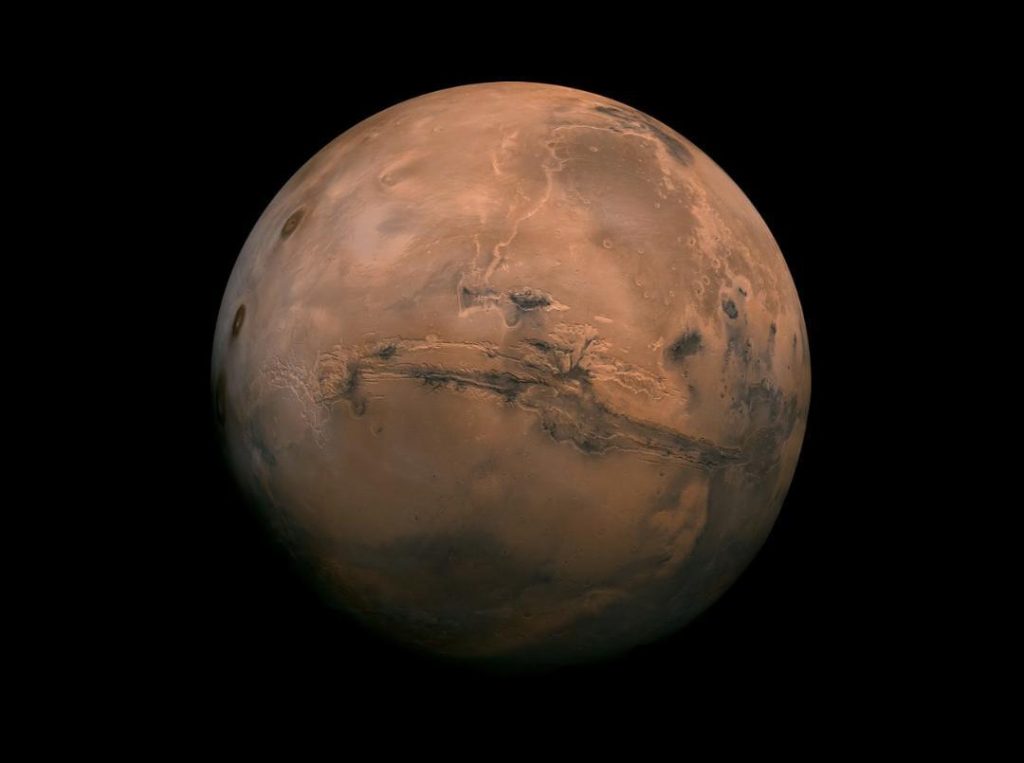
Scientists Finally Discover Why Mars is Red
For decades, scientists have been fascinated by the reddish hue of Mars, the fourth planet from the sun in our solar system. The Martian surface is covered in a thick layer of iron oxide, which gives it its distinctive red color. But despite numerous studies, the exact reason behind this phenomenon has remained a mystery. That is, until now.
A new NASA-funded study published in the journal Science Advances has shed light on the long-standing question of why Mars is red. According to the research, the answer lies in a water-rich iron mineral called ferrihydrite.
Ferrihydrite is a type of iron oxide that is commonly found in Earth’s soil and rocks. On Mars, it is believed to have formed when iron within the planet’s rocks reacted with water or water and oxygen in the air. This reaction, known as oxidation, is the same process that occurs when iron rusts on Earth.
Previous studies of iron oxide on Mars had failed to detect evidence of water, leading researchers to believe that the iron oxide must be hematite, a different type of iron oxide that forms through a different process. However, the new study suggests that this conclusion was incorrect.
“We were looking at the wrong type of iron oxide,” said Dr. Bethany Ehlmann, a planetary scientist at NASA’s Jet Propulsion Laboratory and lead author of the study. “We realized that the iron oxide on Mars is actually ferrihydrite, which is much more sensitive to water than hematite.”
The discovery was made possible through the use of advanced analytical techniques, including X-ray diffraction and Fourier transform infrared spectroscopy. These methods allowed the researchers to analyze the chemical composition of Martian rocks and determine the type of iron oxide present.
The findings have significant implications for our understanding of Mars’ geology and history. According to the researchers, the presence of ferrihydrite suggests that Mars was once much wetter than it is today, with liquid water flowing on its surface. This contradicts previous theories that Mars was always a dry and barren planet.
The discovery also raises questions about the potential for life on Mars. If the planet was once wet and habitable, it’s possible that life could have existed there in the past. The search for signs of life on Mars is a major area of research, with NASA’s Perseverance rover currently exploring Jezero Crater, a region that was once home to a lake.
The new study is just the latest in a series of recent discoveries that have shed new light on Mars’ mysterious past. In recent years, NASA’s Mars Reconnaissance Orbiter has detected evidence of ancient rivers, lakes, and even oceans on the planet. The discovery of ferrihydrite on the Martian surface adds to this growing body of evidence, painting a picture of a planet that was once much more similar to Earth than we previously thought.
The study’s findings also have implications for future Mars missions. As NASA and other space agencies continue to explore the planet, they will need to consider the possibility of water and life on Mars. The discovery of ferrihydrite suggests that the Martian surface may be more hospitable to life than we previously thought, making it an exciting time for astrobiologists and planetary scientists.
In conclusion, the discovery of ferrihydrite on Mars is a major breakthrough in our understanding of the planet’s geology and history. The study’s findings suggest that Mars was once much wetter than it is today, with liquid water flowing on its surface. This raises questions about the potential for life on Mars and has significant implications for future missions to the planet. As we continue to explore Mars and the mysteries of the universe, discoveries like this one will help us better understand the red planet and its place in our solar system.






